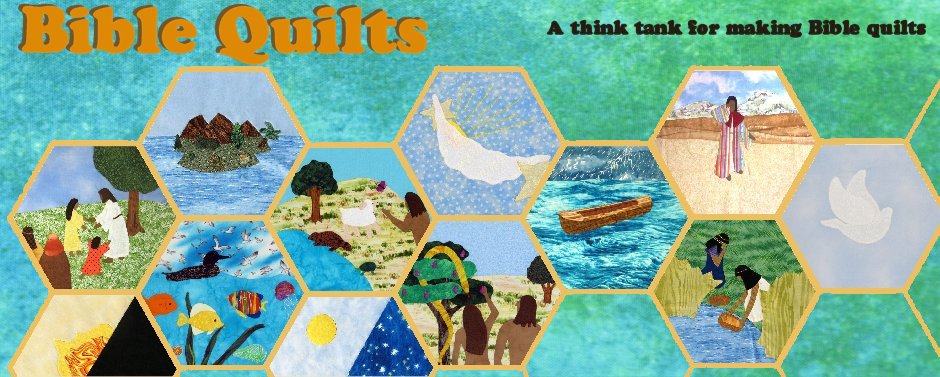I’m a kid again! I just brought home a whopping big 184 Crayola crayons to make Bible quilts. Add that to the 24 crayon box I already had and I now have 208 crayons. I bought them to help children make Bible quilts.

Erica colors one of her Bible quilt pictures.

Wesley is using the light box to trace a picture for the Bible quilt.
I started making Bible story quilt blocks with my grandchildren last week. With the help of a light box we traced the pictures from coloring books onto cotton muslin fabric, then the children colored the fabric blocks.
My oldest grandson, Jonathan, is exceptionally artistic, and he drew his own pictures from scratch. He also painted some of his blocks using textile paints.
Here are a few things I learned along the way:
- You can trace Bible pictures from wherever you find them, not just coloring books. Consider copyright laws, especially if you plan to put your quilt in a public place. You may need to look for pictures that grant copying privileges. One such coloring book is Favorite Bible Stories to Color by Standard Publishing who allows their book to be copied for church and non-profit activities.
- The light box makes it easier to trace the pictures, but only if you copy them to a regular piece of paper first. The picture on the back of a coloring book page will show through when you use a light box. You can use tracing paper, a scanner or a copy machine to copy the pictures.
- The cloth blocks are much easier to handle if you iron a piece of freezer paper to the back first. Then they will lie flat for tracing and for coloring.
- If you don’t have a light box, it is possible to trace through the fabric alone without the freezer paper, but it is more difficult to keep it flat and the design is harder to see.
- Sandpaper can also be used to hold the fabric still while you color if you don’t have freezer paper. Just put the rough side of the sandpaper up and lay your fabric on it.
- Crayola crayons work fine for 100% cotton fabric. If you use polyester fabric you will need to purchase special fabric coloring crayons but your number of colors will be more limited.
- The larger the box of crayons, the better your pictures will come out. I tried to color a Noah’s ark picture with a box of 24 crayons. It had only one brown so it was very difficult to color the animals correctly. It is very difficult to mix crayon colors on fabric. You will need a wide variety of browns, tan and skin tone colors. Remember that Bible characters had darker skin.
- After coloring the fabric, place the quilt blocks between pieces of paper towels and iron until the wax is transfered from the fabric to the paper. The color will remain in the fabric.
- Fabric paints can also be used to paint the Bible pictures, but this is much more difficult and takes much longer to complete. I would only recommend fabric paints for older children who have some experience painting detailed pictures.
- I wish coloring books were square. I could include more pictures and arrange them more easily if they were all square and a little smaller than the size of a typical coloring book page. A scanner and a computer, if available, can be useful in enlarging or reducing portions of pictures to fit into uniform square blocks.

Rachael as colored by Erica, and the parting of the Red Sea painted by Jonathan.
This is as far as I’ve gotten with my child-created Bible quilt project so far. I plan to share my grandchildren’s quilt blocks with a group of quilting women this week for tips on how to proceed in selecting fabrics for the back and edging of our quilt.
I have a few ideas of my own for finishing up our quilt. I may use crayon scraps from sharpening crayons ironed into leftover fabric for edging or as sashing between the Bible pictures. I’m also considering sewing these pictures to a comforter that is already made. The Bible picture blocks could be ironed on using an adhesive/fusing fabric (provided the comforter and batting can take a hot iron) and then finishing the edges any of a number of ways. For example, they could be simply turned under and sewn down by hand or machine, or they could be covered with trims such as rick rack, bias tape, or other trims.





